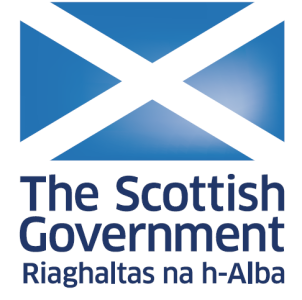Higher Education Graduate Outcomes Statistics: UK, 2018/19 - Outcomes by subject studied
- Summary
- Graduate activities and characteristics
- Activities by previous study characteristics
- Graduate salaries and work locations
- Graduate reflections on activities
- Notes
Experimental statistics
How do the activities of first degree graduates vary by their class of degree?
Figure 9 shows:
- The percentage of first degree graduates in full-time employment dropped from 56% in the survey of 2017/18 graduates to 52% among 2018/19 graduates, while the percentage in unemployment (including those due to start work and study) increased from 6% to 8%. These changes coincided with the onset of the COVID-19 pandemic during which most 2018/19 graduates were surveyed.
- Among 2018/19 first degree graduates the proportion in full-time employment was highest among those who acheived a first class honours degree, at 55%. In contrast, just under half of those who achieved a third class honours/pass were in full-time employment.
- The opposite correlation applies to those who went in to part time employment. For first class honours, the proportion is 10%, increasing to 16% for third class honours/pass.
Figure 9 - Graduate activity by classification of first degree
Academic years 2017/18 to 2018/19
Reset filters | Download chart data (csv) | Download source data (csv) | About SB260 Figure 9
How do the activities of graduates vary by the subjects they studied?
Figure 10 shows:
- A higher proportion of graduates who had studied science based subjects were in full-time employment or full-time study than those who had studied non-science subjects.
- Graduates who studied creative arts & design were more likely to go in to part-time employment than those from any other subjects.
- Among postgraduates in 2018/19, those who studied architecture, building & planning were most likely to be in full-time employment at 73%. In contrast, less than half of postgraduates who had studied historicial & philosophical studies or creative arts & design were in full-time employment.
- Comparing year-on-year differences, 2018/19 graduates in the majority of subject areas saw a 1-2 percentage point increase in the proportion unemployed (including those due to start work or study) compared with their peers who graduated in 2017/18.
- Graduates who had studied creative arts & design saw both the largest decrease in the proportion in full-time employment and the largest increase in the proportion unemployed in the survey of 2018/19 graduates compared with 2017/18.
Figure 10 - Graduate outcomes by subject area of degree and activity
Academic years 2017/18 to 2018/19
Show:
Reset filters | Reset sort | Download table (csv) | Download source data (csv) | About SB260 Figure 10
Figure 11 shows:
- In the survey of 2018/19 graduates, 21% of those in UK work were employed in the industry of human health and social work activities (up from 19% in the 2017/18 survey). The majority of these were working in the industry during the COVID-19 pandemic. In comparison to this, figures estimating workforce jobs by industry in the UK labour market as a whole suggest 12-13% were in human health and social work activities during the same time period (source: ONS).
- Of those who studied science subjects and were working in the UK, 35% of undergraduates and 37% of postgraduates were employed in the human health and social work industry. A high proportion of these graduates studied medicine & dentistry and subjects allied to medicine (e.g. nursing).
- Among computer science graduates in UK work, 40% were in the information and communication industry.
- For non-science subjects, the highest proportion of undergraduates went on to work in the education sector.
Combined is only used for students on courses which do not specify a subject specialism. The majority of students in the combined subject area study at The Open University.
The UK Standard Industrial Classification of Economic Activities (SIC) is used to classify industries by the type of activity they do. Graduates are asked what their employer makes or does. This information is coded using the SIC2007 coding frame. The codes are grouped together for publication. See Standard Industrial Classification: SIC2007 for the full list of codes and how they are grouped together.
Figure 11 - Standard industrial classification of graduates entering work in the UK by subject area of degree
Academic years 2017/18 to 2018/19
Show:
Figure 11 - Standard industrial classification of graduates entering work in the UK by subject area of degree
Academic years 2017/18 to 2018/19
Reset filters | Reset sort | Download table (csv) | Download source data (see notes) | About SB260 Figure 11
Figure 11 - Standard industrial classification of graduates entering work in the UK by subject area of degree
Academic years 2017/18 to 2018/19
Reset filters | Reset sort | Download table (csv) | Download source data (see notes) | About SB260 Figure 11
Figure 11 - Standard industrial classification of graduates entering work in the UK by subject area of degree
Academic years 2017/18 to 2018/19
Reset filters | Reset sort | Download table (csv) | Download source data (see notes) | About SB260 Figure 11
Figure 11 - Standard industrial classification of graduates entering work in the UK by subject area of degree
Academic years 2017/18 to 2018/19
Reset filters | Reset sort | Download table (csv) | Download source data (see notes) | About SB260 Figure 11
Figure 12 shows:
- Of 2018/19 graduates who were in UK work that had studied science subjects, 81% were in high skilled occupations. For graduates of non-science subjects, 71% were in high skilled occupations. Both groups were down 1 percentage point compared with the 2017/18 cohort of graduates.
- Graduates from physical sciences and creative arts & design subjects saw the largest decrease in the proportion in high skilled occupations between the 2017/18 and 2018/19 cohorts.
- Among those who graduated from postgraduate courses in 2018/19 and entered UK work, 9 in 10 were in high skilled occupations. Of those entering UK work from undergraduate courses, just under 7 in 10 were in high skilled occupations.
- Almost a quarter of working graduates from creative arts & design subjects were in low skilled jobs.
The UK Standard Occupational Classification (SOC) system is used to classify workers by their occupations. Jobs are classified by their skill level and content. Graduates are asked what their job title is. This information is coded using the SOC2020 coding frame. The codes are grouped together for publication. See Standard Occupational Classification: SOC2020 for the full list of codes and how they are grouped together. Major groups 1 to 3 are grouped together as 'High skilled'. Major groups 4 to 6 are grouped together as 'Medium skilled' and 7 to 9 are grouped as 'Low skilled'.
Note that for the 2017/18 release of Graduate Outcomes, the dataset was initially coded using SOC2010. A recoding exercise of the 2017/18 dataset to SOC2020 has enabled us to display a consistent time-series of SOC2020 data in this release.
Figure 12 - Standard occupational classification of graduates entering work in the UK by subject area of degree
Academic years 2017/18 to 2018/19
Show:
Figure 12 - Standard occupational classification of graduates entering work in the UK by subject area of degree
Academic years 2017/18 to 2018/19
Reset filters | Reset sort | Download table (csv) | Download source data (see notes) | About SB260 Figure 12
Figure 12 - Standard occupational classification of graduates entering work in the UK by subject area of degree
Academic years 2017/18 to 2018/19
Reset filters | Reset sort | Download table (csv) | Download source data (see notes) | About SB260 Figure 12
Figure 12 - Standard occupational classification of graduates entering work in the UK by subject area of degree
Academic years 2017/18 to 2018/19
Reset filters | Reset sort | Download table (csv) | Download source data (see notes) | About SB260 Figure 12
Figure 12 - Standard occupational classification of graduates entering work in the UK by subject area of degree
Academic years 2017/18 to 2018/19
Reset filters | Reset sort | Download table (csv) | Download source data (see notes) | About SB260 Figure 12
Release date
20 July 2021, 9:30
Coverage
UK
Release frequency
Annual
Themes
Children, education and skills
Issued by
HESA, 95 Promenade, Cheltenham, GL50 1HZ
Press enquiries
+44 (0) 1242 388 513 (option 6), [email protected]
Public enquiries
+44 (0) 1242 388 513 (option 2), [email protected]
Statistician
Rebecca Mantle
Pre-release access
View pre-release access list for this release





